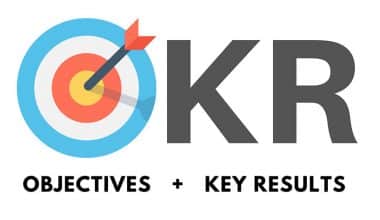Think of Scrum as a process to get work done as a team in tiny chunks at a time, with constant experimentation and feedback loops along the way to learn and improve as you go. If you are just getting started, think of Scrum as a way to get work done in this manner. Scrum allows people and teams to create and master value in small steps and by working together. Also, scrum is a framework for agile development that gives people and groups just the right amount of structure to add to their ways of working while still giving them the freedom to use the practices that work best for them. Three fundamental rules and principles of the scrum will be discussed in this piece.
What Is Scrum?
Scrum is an agile framework for managing projects. It comprises a set of guiding principles and practices that help teams get their work organized and under control. Scrum, on the other hand, is based on how rugby teams train and stresses how important it is for teams to learn from their mistakes, solve problems on their own, and talk about their successes and failures in order to grow.
The scrum I’m talking about is most often used by teams that make software, but the skills and ideas it teaches can be used in any kind of teamwork. Due to this, scrum has gained a lot of attention. Scrum is a way to plan and manage a team’s work using specified meetings, tools, and roles. It is based on the principles of agile project management.
When Is Scrum Applicable?
Scrum works best when a cross-functional team is working on the development of a product in a setting where there is a significant amount of work that can be split into more than one iteration that lasts between two and four weeks.
What Are the Seven Elements of Scrum?
Those unhappy with a project’s outcome are almost unanimous in their belief that they know who is to blame. Owners place blame on slack-off workers, analysts on clients, developers on inept management, and so on. Is there agreement on this? No one is right. Each of us thinks only he can act intelligently and that others’ actions are based on their personalities. As a rule, such is not the case; everyone has their own justifications.
Attributing guilt is futile. Instead of trying to find bad people, focus on identifying the damaging systems that encourage the development of bad procedures and reward poor performance. Scrum is a framework for fostering collaborative teamwork. It avoids identifying wrongdoers in favor of discovering what went wrong so that it can be fixed. Here are the seven elements of a scrum:
#1. Identify a Scrum Master
Someone needs to probe for answers to the tough questions. A character with the wisdom of Shakespeare’s jester would be useful. A “scrum master” is someone who keeps an eye on how a project is going, makes sure that the team’s daily “scrum” meetings happen, and helps clear roadblocks. The scrum master’s primary role is project management. It’s not a good idea to have the same person serve as both the scrum master and the product owner, as they perform different functions and could potentially have competing interests.
#2. Product Strategy
For any project or product, the “product vision” describes the ultimate objective. Defining this item is the first step in giving the project or product its definitive course. The product vision serves as a compass for the scrum team.
The scrum team should know the product vision like the back of their hand. That means it needs to be succinct and clear. However, it is important for a scrum team to keep the product vision in mind at all times.
#3. Launch a Product Backlog
The product backlog contains every single requirement for the product, prioritized. In order to keep moving forward as the product develops, the team follows an ever-evolving backlog. To clearly define “all that a team can perform by priority,” there is no better way than to use a product backlog.
At any given time, there should be at most one product backlog. That means the product owner needs to set priorities based on the entire suite of activities. The product owner needs to talk to everyone involved to get full feedback and make sure that all customer needs and expectations are on the backlog.
#4. Bring Transparency to the Process
Putting together the proper structure is of utmost importance. There must be an emphasis on individualism, autonomy, and respect for others. Organizational leaders that want to keep everything under wraps do not want even the most senior members of staff to be aware of the current state of affairs, the accomplishments of the organization, or the timeliness with which they were accomplished. However, it is impossible to trade in information or expertise since secrets are the only thing that can ensure their continued authority (at least, they think so). The only thing they care about is themselves, and in most cases, that is not good for the product or the business.
#5. Sprint Backlog
The “sprint backlog” section of the “product backlog” shows what the team will prioritize and work on during the sprint. It’s the list of things you need to get done during the sprint.
The items in the sprint backlog are further categorized into tasks that the team can work on in the coming week. Before the end of the sprint, each item on the sprint backlog must be written in code, tested, and documented. During the sprint meeting, the product owner collaborates with the scrum team to create a sprint backlog. A task board with columns for each step of the process is often used to show the sprint backlog.
#6. Plan Your Sprint
During a sprint, a team works together to create a working version of the product, even if it is only a small portion of the overall project. Afterward, it can be displayed promptly before the client. Planning, or “sprint planning,” is the meeting held before each sprint in which the team, the scrum master, and the product owner decide what will be accomplished during the sprint.
There should be a consistent time limit on sprints, and that time limit shouldn’t be longer than a month. Sprint durations of one to two weeks are recommended (questionable, but for me, it works best). The team estimates how many things can be worked on in the next sprint from the top of the backlog. A team’s strategy should take into account the most recent sprint’s point total after a few iterations. While the scrum master and team may attempt to raise the number of points earned in each sprint, they should do so within reason.
The product owner and the team can double-check that they have a shared understanding of how to carry out their tasks during the sprint planning phase. Everyone involved in the sprint must come to a consensus on its purpose and the tasks associated with it at this meeting.
#7. Burn Rate Chart
Even though it is not usually one of the most important parts of a scrum, a burndown chart is an essential tool that should not be overlooked. It is a visual representation of how quickly the team is working through the user stories or other items in the product backlog. Consequently, a burndown chart depicts the overall effort in relation to the sprint’s workload.
A burndown chart is also used to make sure that a project is still moving forward and that the end result will be good and delivered on time.
How many user story points a scrum team completes in a sprint determines its efficiency. Don’t factor in partial completion when calculating speed.
How Many Pillars Are in Scrum?
There are three pillars in a scrum framework, which are:
- Transparency
- Adaptation
- Inspection.
They’re crucial to Scrum’s accomplishments. Without them, you run the risk of spending time and energy on a fruitless hamster wheel. Let’s take a brief look at these pillars.
#1. Transparency
The product backlog, the sprint backlog, and the product increment should all be open to each other. Because decisions are based on these elements, the scrum team and all parties involved need access to them. In addition to the aforementioned elements, the scrum team must also be transparent regarding its team agreements, the ways in which it collaborates both internally and externally, the company’s vision and strategy, as well as how the product increment contributes to these.
Transparency is critical for auditing to succeed. Inspection is a waste of time and money if there is no way to see what is being inspected, and implementing judgments made based on an inspection with no transparency wastes even more time and money.
#2. Adaptation
When a review demonstrates that the latest product increment or development needs tweaking, the scrum technique must be altered immediately. The scrum group makes decisions and takes the appropriate steps. The scrum team needs authority from above to speed up the growth and evolution of the process. In addition, restricting the autonomy of a scrum team is a common organizational mistake.
#3. Inspection
In scrum, members frequently and thoroughly examine how well they are doing in terms of reaching both the overall product goal and the current sprint goal. That way, problems with the product increment or the development process can be spotted early on. The sprint, sprint planning, daily scrum, sprint review, and sprint retrospective are the five most focused inspection times in Scrum. At any point during the scrum process, there is the potential for there to be a requirement for an inspection.
Inspection is the most important step in any kind of adaptation. Without testing, spending time and money to adapt is a waste of time and money. Forgetting to check your adaptations before implementing them could waste a whole sprint for your team.
What Is Scrum Master
Simply put, a Scrum Master is a trained professional who uses Agile project management to lead a team through a project. A Scrum Master is also in charge of coordinating and facilitating all interactions between the people in charge of the project and the team members.
A Scrum Master’s role is focused yet has far-reaching implications for any company. However, a scrum master typically operates in the background and has little say in the development or strategy of the product itself. As a project manager, their role is more akin to that of an intermediary between product or line-of-business owners and development teams. Scrum Masters must be able to blend technical knowledge with interpersonal and communication abilities. This is due to the collaborative nature of agile procedures. Considering the complexity of software projects, it’s easy for a single developer to lose sight of the big picture while deep in coding.
A Scrum Master, on the other hand, keeps things in perspective, assisting teams in seeing the big picture and learning to navigate obstacles like organizational and technological dependencies. This gives team members a sense of responsibility and helps them finish their work by the due date.
What Are the Roles and Responsibilities of the Scrum Master?
Despite the title, the scrum master does not have executive authority over the development team or the project. The responsibilities of a Scrum master may include, but are not limited to, the following:
#1. Put Into Effective Methods of Project Management and Best Practices
The Scrum Master’s job is to bring the team together and welcome new members, introduce them to the company’s culture, and give them a clear picture of what the end goal is. The scrum master also serves as a way for the project team and any outside stakeholders to share information and talk to each other. They keep an eye on how things are going, offer useful criticism, and promote a learning and adaptable mindset.
#2. Coach Team Members
By reflecting the team’s current situation back to them, the scrum master helps them improve their performance. With some help and work, a Scrum team can become self-managing and build a shared sense of ownership and commitment.
Scrum philosophy, scrum practices, and team standards are all things that the scrum master may help team members with.
Because there are no formal management levels in Scrum teams, the Scrum master must rely on his or her persuasive abilities to get things done. Scrum also shifts the burden of accountability for project success away from the scrum master and onto the entire scrum team.
#3. Get Rid of Obstacles
The Scrum Master makes sure that everyone’s attention is on the tasks at hand when working in an iterative way. To accomplish this, the scrum master takes care of anything that might get in the way of the group’s development. Too many unnecessary meetings, for instance, can hinder a team’s productivity. The Scrum Master should work with the planners of meetings to ensure that only necessary participants are called upon to show up. In conjunction with product owners and stakeholders, the scrum master can reallocate time and effort for team members who are working on several teams.
#4. Teach Scrum Practices and Principles
One of the main jobs of a Scrum master is to lead the organization through the process of putting Scrum into place by giving team members training, coaching, and advice. All the while spreading the word about the Scrum framework, tenets, and principles that you’ve learned. A key goal is to encourage the company to start basing its decisions on evidence.
A part of the Scrum master’s job is to help stakeholders talk to the Scrum team in a way that promotes openness, mutual respect, and growth.
#5. Initiate Daily Stand-Up Meetings
By facilitating meetings like daily stand-ups, sprint planning sessions, sprint reviews, etc., the Scrum Master ensures the team stays on track and stays organized. Team members report on their progress thus far, share their plans for the day, and voice any concerns they may have encountered thus far. The Scrum Master must make sure that everyone on the team, including those who are working remotely, has access to and can take part in all scheduled meetings.
Scrum Principles
The Scrum framework was built on a set of guiding principles known as the Scrum principles. Keep in mind that Scrum’s tenets apply as well to every industry or project. Scrum’s core principles can’t be changed, and they must be used as described in a handbook. Scrum’s elements and practices, however, are adaptable to the specifics of any given project or business.
Users are more likely to believe that the Scrum framework will help them reach their project goals if they keep to the framework’s guiding principles and use them correctly. In the Scrum framework, “principles” are the fundamental rules that must be followed. Here are the top 3 scrum principles:
- Control over the empirical process: This principle highlights the basic tenets of the Scrum methodology, which are openness, inspection, and flexibility. When an issue is not well defined or when there are no obvious answers, empirical process control can help learners gain insight through experimenting.
- Self-organization: The Scrum process is very dependent on a large number of people, hence self-organization is crucial. The self-organization principle promotes autonomy at work, which boosts morale and makes it simpler to gauge each participant’s contribution.
- Collaboration: This guiding principle highlights the significance of three factors important to effective teamwork: self-awareness, communication, and creative ownership. Furthermore, it promotes the idea of project delivery as a collaborative process of creating value for the entire organization, with teams working together and interacting with one another, the customer, and any other relevant business stakeholders.
What is Scrum in Agile?
Scrum is an agile project management paradigm that outlines responsibilities, timelines, and deliverables for teams. A typical sprint only lasts between one and four weeks, making this method iterative. By following this plan, your team will keep putting out new versions of the product.
Scrum is an iterative development process that relies on a software-based paradigm with defined roles, responsibilities, and meeting structures. The best results come from using it when the end result is a tangible product rather than a service, but it can be used for any difficult project. Also, read AGILE PROJECT MANAGEMENT TOOLS: Definition, Uses, And List of APM.
What is scrum vs. agile?
Scrum’s focus on continuous improvement is similar to one of agile’s guiding pillars, leading some to incorrectly assume the two are interchangeable. Scrum, on the other hand, is a framework for getting things done, while Agile is more of an approach to management. Agile principles emphasize iterative, incremental progress via frequent, small-scale releases. In order to truly “become agile,” your entire team would need to alter their mindsets about how they provide value to clients, which is impossible to do without significant effort. But a framework like Scrum may get you thinking in that direction and practicing integrating agile principles into your regular communication and tasks.
Conclusion
The scrum methodology is straightforward. It’s simple to grasp the system’s rules, artifacts, events, and roles. Its semi-prescriptive nature helps make the development process clearer while giving businesses room to add their own special touches.
It’s perfect for challenging projects since it breaks down large, complicated tasks into smaller, more manageable user stories. Also, having clear roles and a schedule of events encourages everyone to be open and take part in the development process. With regular updates, both the team and the people who use the product can see how quickly it is getting better, which is good for morale and satisfaction.
Scrum FAQs
What are scrum values?
- Commitment
- Courage
- Focus
- Respect
What is the Scrum process?
The Scrum process pushes people to use what they have and constantly look at what is and isn’t working. Good communication is crucial, and it is carried out through meetings known as “events.”
What are the 3 C's of Scrum?
The three Cs stand for Card, Conversation, and Confirmation
Similar Articles
- Project Management Tools: Best 25+Tools and Techniques
- MASTER DATA MANAGEMENT TOOLS: Best Data Management Tools
- TOP 10 DATABASE MANAGEMENT COMPANIES
- Work Order: Simple Procedure/ Steps for Creating a Work Order
- OFFICE POLITICS: Definition, Importance, and How to Master It






